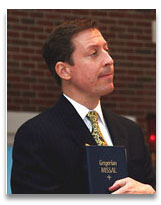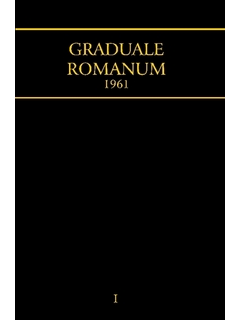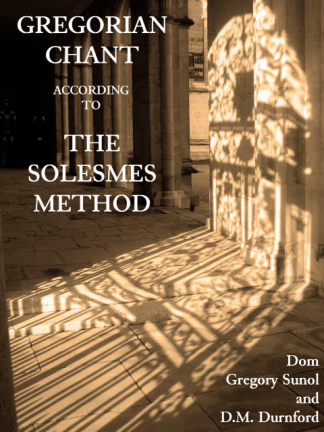From the Post-synodal Apostolic Exhortation Sacramentum Caritatis, released this morning.
42. In the ars celebrandi, liturgical song has a pre-eminent place. Saint Augustine rightly says in a famous sermon that “the new man sings a new song. Singing is an expression of joy and, if we consider the matter, an expression of love.”. The People of God assembled for the liturgy sings the praises of God. In the course of her two-thousand-year history, the Church has created, and still creates, music and songs which represent a rich patrimony of faith and love. This heritage must not be lost. Certainly as far as the liturgy is concerned, we cannot say that one song is as good as another. Generic improvisation or the introduction of musical genres which fail to respect the meaning of the liturgy should be avoided. As an element of the liturgy, song should be well integrated into the overall celebration. Consequently everything – texts, music, execution – ought to correspond to the meaning of the mystery being celebrated, the structure of the rite and the liturgical seasons. Finally, while respecting various styles and different and highly praiseworthy traditions, I desire, in accordance with the request advanced by the Synod Fathers, that Gregorian chant be suitably esteemed and employed as the chant proper to the Roman liturgy….
62. … I am thinking here particularly of celebrations at international gatherings, which nowadays are held with greater frequency. The most should be made of these occasions. In order to express more clearly the unity and universality of the Church, I wish to endorse the proposal made by the Synod of Bishops, in harmony with the directives of the Second Vatican Council, that, with the exception of the readings, the homily and the prayer of the faithful, it is fitting that such liturgies be celebrated in Latin. Similarly, the better-known prayers of the Church’s tradition should be recited in Latin and, if possible, selections of Gregorian chant should be sung. Speaking more generally, I ask that future priests, from their time in the seminary, receive the preparation needed to understand and to celebrate Mass in Latin, and also to use Latin texts and execute Gregorian chant; nor should we forget that the faithful can be taught to recite the more common prayers in Latin, and also to sing parts of the liturgy to Gregorian chant.
 If you are coming to the Sacred Music Colloquium but would like more extensive training, you can stay over from June 25 to July 13, 2007, to take the long-established Gregorian Chant Practicum at The Catholic University of America, as sponsored by the Ward Center and taught by Professor Scott Turkington. The course is designed for those wishing to learn the Solesmes Method well but also for those who come to Gregorian chant for the first time (but otherwise have the ability to sing).
If you are coming to the Sacred Music Colloquium but would like more extensive training, you can stay over from June 25 to July 13, 2007, to take the long-established Gregorian Chant Practicum at The Catholic University of America, as sponsored by the Ward Center and taught by Professor Scott Turkington. The course is designed for those wishing to learn the Solesmes Method well but also for those who come to Gregorian chant for the first time (but otherwise have the ability to sing). The Graduale is the book for the choirs that contains all the official chants attached to the Mass. This rare edition brings back in print the 1961 Graduale, which includes Pius XII’s Holy Week reforms.
The Graduale is the book for the choirs that contains all the official chants attached to the Mass. This rare edition brings back in print the 1961 Graduale, which includes Pius XII’s Holy Week reforms. Gregorian Chant According to the Solesmes Method (1930) is now available
Gregorian Chant According to the Solesmes Method (1930) is now available